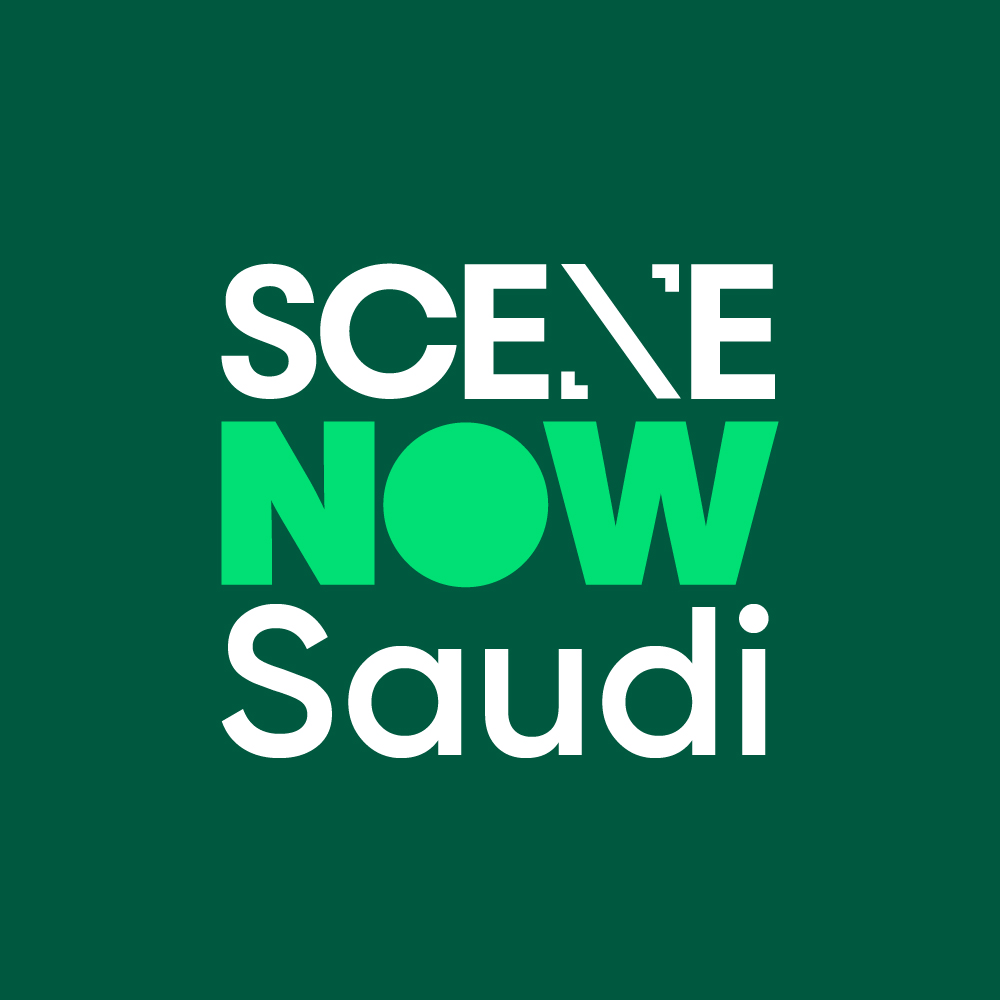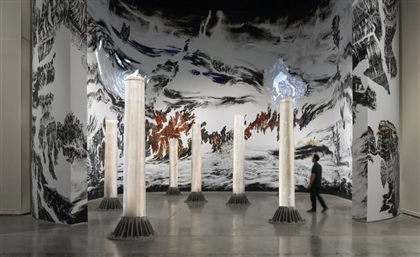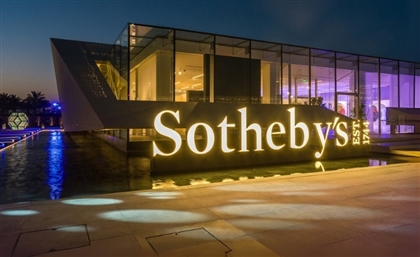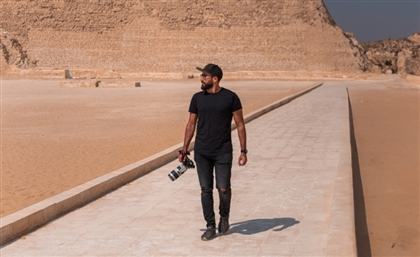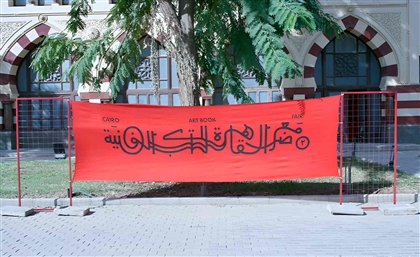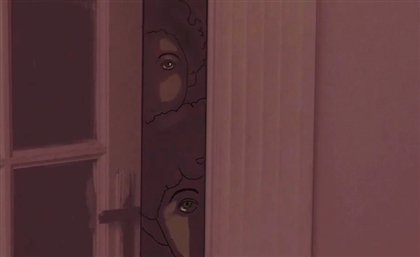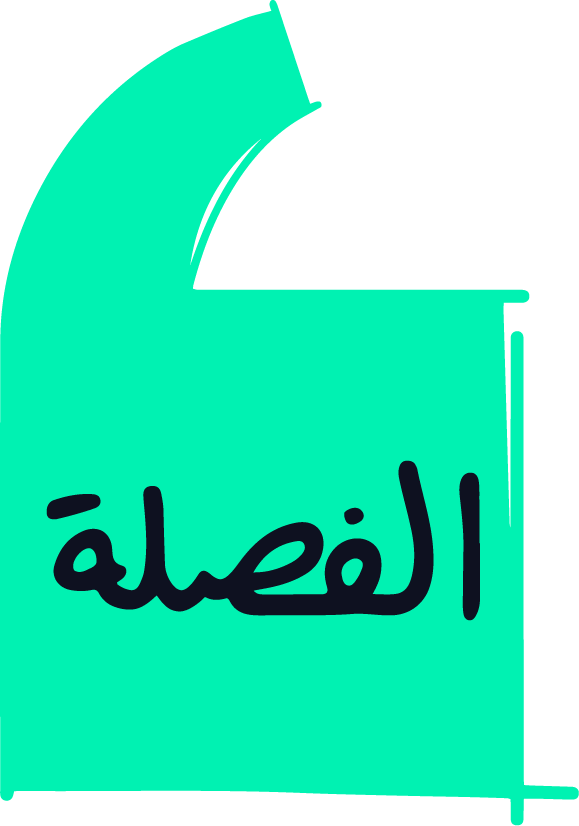Ahaad Alamoudi Reiterates Ghosts of Today and Tomorrow in Paris
At Asia NOW 2025, Ahaad Alamoudi reanimates Ghosts of Today and Tomorrow, a live installation where echoes stand in for memory, and what’s gone keeps speaking back.
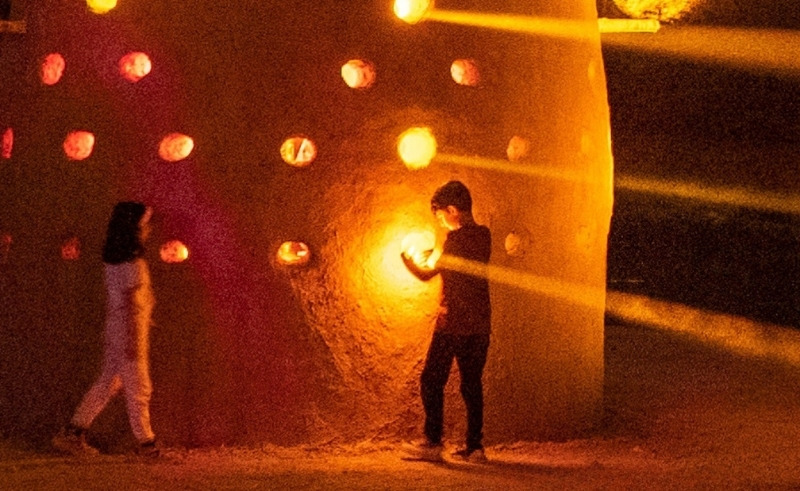
In the vaulted halls of Asia NOW 2025, held at the historic Monnaie de Paris, the Saudi multidisciplinary artist Ahaad Alamoudi brings forth Ghosts of Today and Tomorrow, a haunting meditation on translation, migration, and transformation.
Alamoudi describes it as a language that is rewritten by place. “In this iteration, the language of the work evolves through its direct relationship to the landscape,” she tells SceneNowSaudi. “Each time the piece is installed, it adapts to its surroundings, responding to the physical, spatial, and atmospheric qualities of the site. In Paris, the new context shifts the tone of the work and opens it up to new readings.
What, precisely, is doing the speaking? The title offers a clue. “The ‘ghosts’ are metaphors for voices, for memories that continue to resonate even when they’re no longer physically present,” Alamoudi said. “They hold echoes of the past while existing in the present, connecting what was with what could be. It’s memory but also a kind of speculative presence.”
Asia NOW’s theme this year is “GROW,” a curatorial rubric that could have nudged a less exacting artist towards scale, but Alamoudi is more circumspect. Growth, here, means an adjustment of perception; the way the body learns a space. Sound and light are the work’s instruments. “Sound and light in this piece both carry the message, but they reach the viewer through different senses,” she said. “The sound moves through the space like a presence, while the light appears and disappears, guiding the audience’s attention and shaping how they navigate the work.” A line of illumination ripples along a wall and recedes; a voice opens a note and lets it decay, so slowly you realise you were holding your breath.
“This piece is deeply temporal,” she told me. “Like ghosts, the presence of the performers and their voices lingers in the space even after they’ve moved on. The work unfolds through echoes, reverberations, and intervals, moments that stretch time rather than mark it. The performance is not just what happens in the present moment but also what remains after it.”
Alamoudi’s method often incorporates archival material into contemporary media without indulging in nostalgia or rupture. “For me, the archive is not static; it’s an active loop,” she said. “I often work with videos, where repetition functions as an infinite archive, something constantly in motion. By allowing these materials to loop, overlap, and shift, the past and present speak to one another rather than cancel each other out.”
Outside the gallery, questions of cultural legibility orbit the work. What, in Paris, can be
understood of Saudi codes transmitted through ritual, song, and gesture? Alamoudi prefers sensation to annotation. “I don’t think you need to fully understand the cultural codes to feel the work,” she said. “‘Ghosts of Today and Tomorrow’ speaks through emotion, through sound, light, and presence. These are universal registers that don’t require translation. The cultural specificity is there, but it’s carried through feeling and atmosphere, not explanation.”
There’s a give and take in this process, a negotiation between the original context of the work and the new place it inhabits. “This presentation is in collaboration with Dr. Faisal Labban and Bassam Labban, two incredible Majes performers,” Alamoudi said. “They bring a deep knowledge of maqams and an extraordinary sensitivity to the space. While I provide a framework and direction, their choices, how they stretch their voices, where the sound travels, how they breathe into the landscape, shape the work in real time.”
Much of the attention at art fairs accrues to the visible: objects with price and provenance. “Ghosts of Today and Tomorrow” bets on something less easily traded: an after-feeling. What, I asked, should a visitor take with them if they encounter the piece without any context at all? “I’d want them to leave with a sense of having felt something intangible, a vibration, a shift, a moment of being part of something larger,” she says.
Trending This Week
-
Dec 12, 2025







